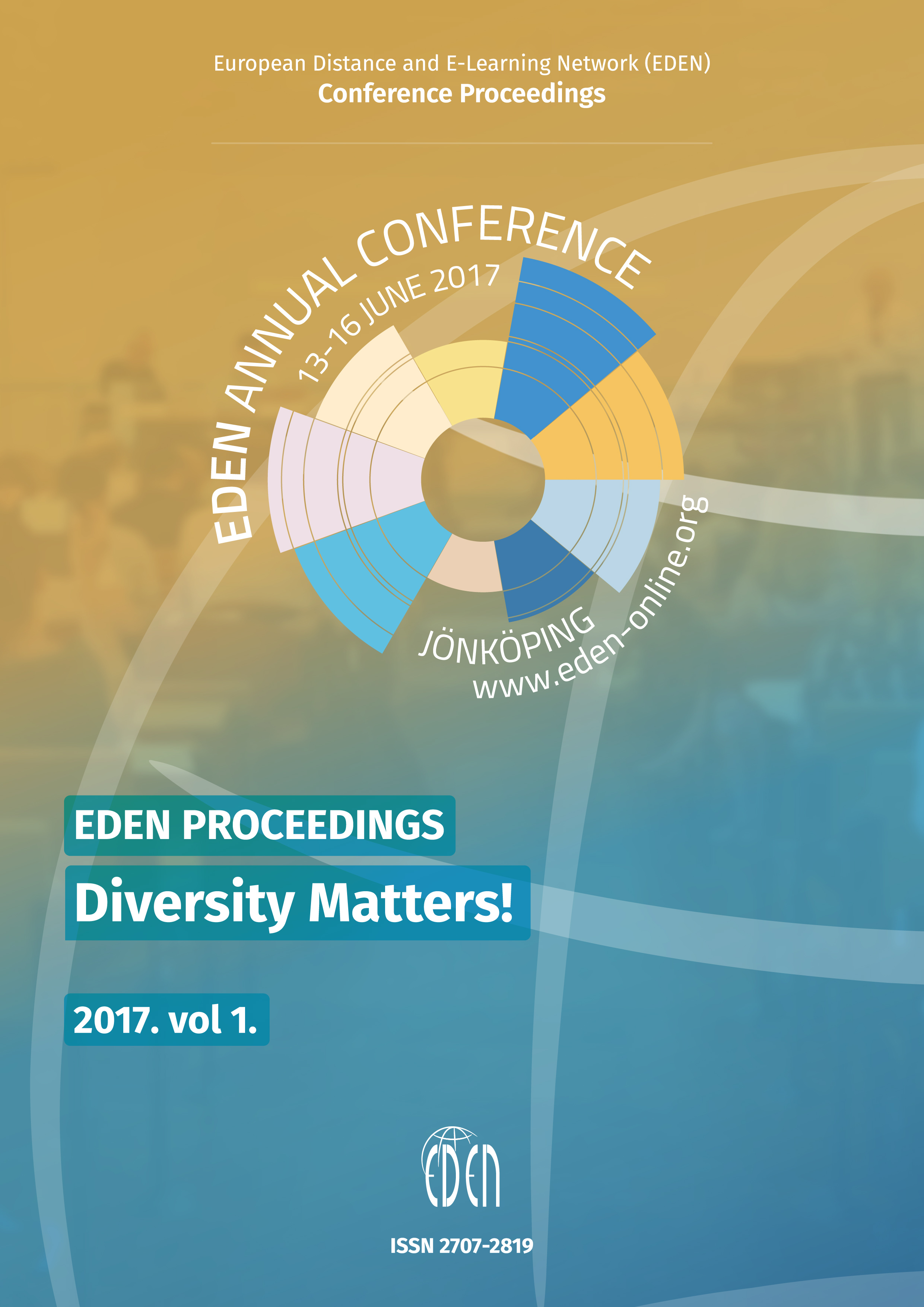Assessing Diversity in Learners Background And Performance
Assessing Diversity in Learners Background And Performance
Author(s): Anikó Balogh, Laszlo Pitlik, Máté Schnellbach, Ferenc SzaniSubject(s): Social Sciences, Education, Higher Education
Published by: European Distance and E-Learning Network
Keywords: Assessment and evaluation; Distance and e-learning methodology; E-learning policies, strategies; Learning analytics; Lifelong learning
Summary/Abstract: Assessing diversity in learners’ background and performance assumes the observation of learning processes. Observation may be executed both in case of contact learning activities and especially in e-learning systems, where the storing of data logs is an essential part of system maintenance and system analysis. The observation of human individuals through questionnaires and/or interviews (e.g. collection data about satisfaction levels concerning learning objects, phases, etc.) should always be interpreted on the basis of the parable of the “boiling frog”. Storing logs apparently requires the definition of phenomena (being worth logging) in advance. It is – however – not the only method. Moreover this method as such has inevitable risks. Lack of data in case of newer interpretation needs being generated in the hermeneutical process based on plan-oriented data. Instead of defining data needs in advance, it is possible to create logs which guarantee a high level of reproduction concerning each detail of the learning process (incl. even mouse movements in 1/100 sec rhythm). Reproduction-oriented logs always ensure the chance of being able to follow arbitrary analytical objectives any time. Therefore the quality and efficiency of assessing diversity in learners’ background and performance highly depends on the quality of data, where efficiency is considered as a kind of ratio between derived information added value and the resources needed.In this article, the authors focus on e-learning systems with high level reproduction capacity in the process of logging. Contact study activities are not examined at present, yet blended learning activities (like e-seminars) are also among the targeted features. The aim of this article is (based on real data assets over 10 millions of records but without case-study-like results) to outline an analytical system covering quasi 360° of analytical expectations for a (later automated) decision support service using both classical statistics and artificial intelligence methods for modelling (e.g. robot teachers).
Journal: European Distance and E-Learning Network (EDEN) Conference Proceedings
- Issue Year: 2017
- Issue No: 1
- Page Range: 235-241
- Page Count: 7
- Language: English

